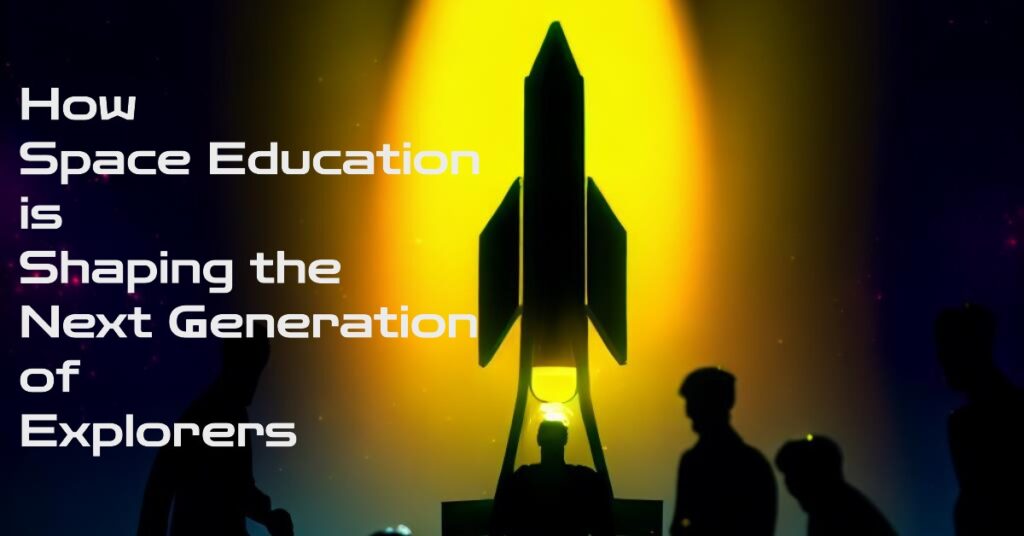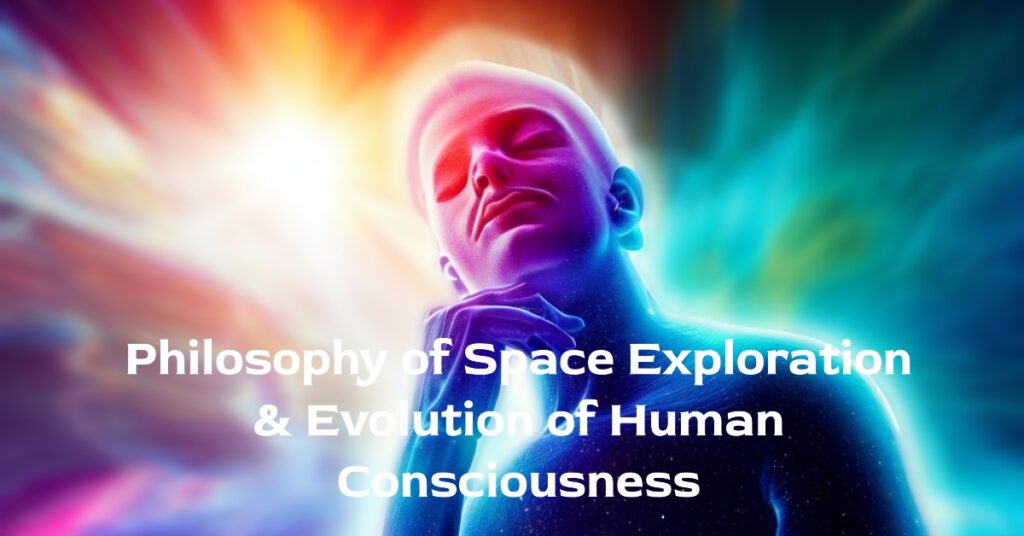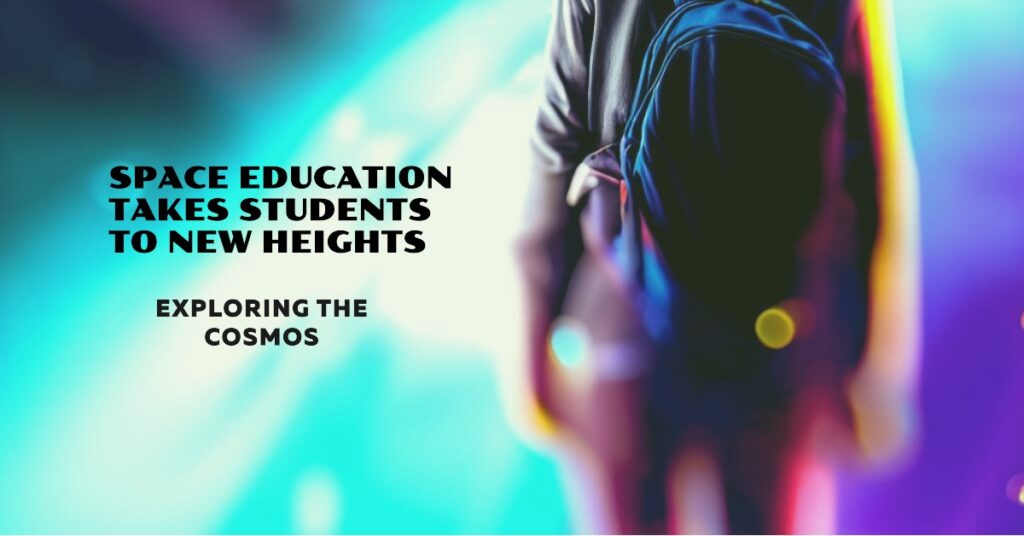The Call of the Cosmos: Why Space Exploration Matters
The quest to explore space has captured our collective imagination since the dawn of civilization. From ancient astronomers to modern-day space agencies, humanity has been driven by a desire to know what lies beyond Earth’s bounds. Today, space exploration is more important than ever before.
Not only is it a source of scientific discovery and technological innovation, but it also serves as a symbol of our limitless potential as a species. However, the journey into space is not without its challenges.
From funding constraints to technological limitations, there are many obstacles that stand in the way of sustained progress in this field. One critical challenge facing space exploration today is the need to inspire and cultivate the next generation of space explorers.
The Next Frontier: Inspiring Future Generations
As we look towards the future of space exploration, it becomes clear that we need to inspire young people to pursue careers in STEM fields and become involved in this exciting field. The importance of inspiring future generations cannot be overstated; these are the people who will drive innovation and progress in this field for years to come. This is where space education comes into play.
By providing students with opportunities to learn about outer space, we can help them develop an interest in science and technology from an early age. Space education can help cultivate curiosity and excitement while also building critical thinking skills that will be essential for future success.
The Power of Space Education
Space education can play a crucial role in inspiring young people by giving them access to information and resources that they might not otherwise have had access to. It provides students with hands-on learning experiences that allow them to explore complex concepts like gravity, planetary movement, and more.
In addition, by emphasizing the importance of collaboration and teamwork within STEM fields through group projects or activities like model rocket building or designing habitats on other planets for astronauts, students can develop real-world skills that are highly valued in industry. Space education can also help promote diversity and inclusivity within the field, ensuring that everyone has the chance to pursue their dreams of space exploration.
The Benefits of Space Education
Developing Critical Thinking, Problem-Solving, and STEM Skills
Space education can have a significant impact on the development of critical thinking, problem-solving, and STEM (Science, Technology, Engineering, and Mathematics) skills among students. These skills are essential for students to be successful in many aspects of life and are particularly important in the fields of science and engineering.
One way that space education can help develop these skills is through project-based learning. This approach involves giving students a real-world problem to solve that is related to space exploration.
For example, students may be asked to design a functional Mars habitat or develop a plan for a manned mission to Jupiter’s moon Europa. By working on these projects, students are forced to think critically about various problems related to space exploration and come up with innovative solutions.
Another benefit of space education is that it can help students develop STEM skills that are essential in various industries. For instance, learning about rocket propulsion systems involves basic physics concepts such as Newton’s laws of motion, which give young learners an appreciation for science as well.
Inspiring Creativity and Innovation among Students
Another benefit of space education is that it inspires creativity and innovation among students.
Learning about the vastness of the universe triggers imagination within kids’ minds, creating room for diverse ideas. Space education introduces young learners to an environment where almost everything is unknown; new questions arise every day, which creates room for unique ideas generated by their curiosity towards finding answers.
In addition to fostering curiosity in learners’ minds toward finding answers regarding outer-space mysteries; Space Education also encourages innovation by having them come up with solutions based on new technology or imagining entirely new breakthroughs that contribute significantly toward space exploration goals. Furthermore, it cultivates creativity by introducing different perspectives towards solving challenging problems related to designing missions or building spacecraft from scratch.
Overall, the benefits of space education for students are numerous. By developing critical thinking, problem-solving, and STEM skills while inspiring creativity and innovation, space education can prepare students for future careers in the space industry or other STEM fields.
It also fosters a sense of curiosity that is essential in achieving breakthroughs that lead to advancements in space exploration. It is clear that space education plays an important role in inspiring the next generation of space explorers.
The Importance of Early Exposure to Space Education
Inspiring Future Generations of Space Explorers
Early exposure to space education can be a major factor in inspiring the next generation of space explorers. When children are exposed to the wonders of space at a young age, it can ignite their curiosity and inspire them to pursue careers in science, technology, engineering, and mathematics (STEM) fields. This is important because these fields are essential for future space exploration missions.
With so many advances happening in the field of space exploration, it’s important that we inspire young minds to join us on this journey. The more we expose children to the excitement and possibilities of space exploration early on, the more likely they are to develop a passion for it that will carry them through their academic years and eventually into careers related to space exploration.
Building A Strong Foundation In STEM Fields
Early exposure to space education can also help students build a strong foundation in STEM fields. By learning about topics such as astronomy, physics, engineering principles, and robotics related to space exploration at an early age, children can develop critical thinking skills that will serve them well throughout their lives. One study found that students who were exposed to STEM education earlier in life were more likely to have higher test scores and better academic performance overall.
Another study found that students who participated in STEM-related extracurricular activities were more likely to pursue STEM majors in college than those who did not participate. By providing children with access to quality space education programs from an early age, we can set them up with a strong foundation in STEM fields that will serve them well throughout their academic careers and beyond.
And who knows? Maybe one day they’ll be among the first humans on Mars!
Innovative Approaches to Space Education
The Power of Virtual Reality and Simulations
One of the most exciting new approaches to space education is the use of virtual reality (VR) and simulations. With VR, students can be transported to a simulated environment that allows them to experience everything from the surface of the moon to the inside of a spacecraft.
This technology offers an immersive experience that can make learning about space more fun and engaging. VR simulations can also be used to teach students about some concepts that are difficult to visualize, making it easier for them to understand complex ideas like orbital mechanics.
Simulations are another powerful tool for teaching space education. Simulations allow students to experiment with different scenarios and see how they play out in real time.
For example, an orbital simulation might allow students to adjust variables like velocity and altitude, then observe how those changes affect the spacecraft’s orbit. These kinds of simulations give students a chance to experiment with different possibilities without any real-world consequences.
Hands-On Activities: Bringing Space Into The Classroom
While virtual reality and simulations offer exciting new ways for students to learn about space, hands-on activities remain a popular approach for many teachers. By bringing real-world space-related objects into the classroom or creating their own models, teachers can create interactive lessons that help engage students on a physical level.
For example, teachers might have their students build model rockets or design their own Mars rover prototypes using simple materials like cardboard and glue. These kinds of hands-on activities give students an opportunity not only to learn about key concepts but also to put their creativity into practice by designing something unique.
Collaborative Projects: Encouraging Teamwork And Creativity
Another approach gaining popularity is collaborative projects, where groups of students work together on projects related to space exploration. These types of projects encourage teamwork, creative problem solving, and communication skills.
Students might be given a challenge like designing a colony for humans on Mars or coming up with a way to terraform the planet. These collaborative projects often require students to do research, analyze data, and think critically about complex problems.
By working together and sharing ideas, students can learn from each other and develop important skills that will serve them well in their future careers. Overall, innovative approaches like VR simulations, hands-on activities, and collaborative projects offer exciting new ways for students to learn about space exploration while having fun at the same time.
The Future of Space Exploration
The Current State of Space Exploration
Space exploration has come a long way since the first man landed on the moon nearly 50 years ago. Today, we have rovers exploring Mars, telescopes looking deep into space, and even private companies like SpaceX aiming to take humans to other planets.
The International Space Station (ISS) has been continuously occupied by astronauts for over 20 years, conducting research and experiments related to space travel and living in microgravity. However, despite these developments, there is still much to be discovered and explored in our solar system and beyond.
New technologies are being developed all the time that will enable us to explore further than ever before. For example, NASA’s James Webb Space Telescope set to launch in 2021 will allow us to see farther into space than ever before.
The Future Plans for Missions to Mars, Moon etc.
One of the most exciting aspects of future space exploration is the possibility of sending humans back to the moon and even on missions to Mars. NASA’s Artemis program aims to land humans on the moon again by 2024 using new spacecraft and technology that will pave the way for future trips deeper into space. Meanwhile, SpaceX founder Elon Musk has announced plans for his company to send humans on a mission around the moon soonest, with their spacecraft called Starship.
Additionally, Musk has stated his ultimate goal is colonizing Mars with a self-sustaining city. Other countries such as China and Russia are also investing in their own space programs with plans for exploration missions in the coming years.
Continued Investment in Space Exploration
The continued investment in space exploration requires a new generation of scientists, engineers, and astronauts who are committed not only to discovering what lies beyond Earth but also to developing new technologies that can improve life on our planet. Space education plays a crucial role in inspiring the next generation of space explorers, who will lead the way in these discoveries.
By giving students early exposure to STEM fields and space exploration, we can foster a passion for discovery and innovation. This will not only help us achieve our goals in space but also drive progress back on Earth.
The benefits of continued investment in space exploration are numerous, including advancements in medicine, technology, and environmental research. It is up to us today to invest in the future by inspiring the next generation of explorers and innovators who will continue to push the boundaries of what is possible both on Earth and beyond.
Final Thoughts: The Importance of Inspiring the Next Generation of Space Explorers
Space exploration has always been a subject of fascination for people all around the world. With the emergence of new technologies and scientific advancements in recent years, space exploration is becoming more accessible than ever before.
However, to continue making progress in this field, we need to inspire the next generation of space explorers. This is where space education comes in.
I’ve highlighted the benefits of space education and how it can help students develop critical thinking skills, problem-solving skills, and STEM skills. I have also discussed the importance of early exposure to space education and how innovative approaches can make learning about space more fun and interactive for students.
By inspiring students to pursue careers in science, technology, engineering, and math (STEM), we can ensure that there will be a new generation of scientists, engineers, and astronauts who will continue pushing the boundaries of what is possible in space exploration. It is important to remember that investing in space education now means investing in our future as a species.
The discoveries we make through space exploration will undoubtedly lead to breakthroughs that benefit all aspects of our lives on Earth. So let us continue inspiring young minds to explore beyond our planet’s atmosphere and reach for the stars!

C M, a seasoned editor, journalist, and consultant, is deeply fascinated by the convergence of technology, space, and the future of humanity.
With a particular interest in transhumanity, futurology, and the philosophical and ethical dimensions of these domains, C M serves as the lead contributor to SpaceSpotlight and TranscendSphere.
When not penning insightful articles on these rapidly evolving fields, C M indulges in their love for podcasts and books, proudly embracing their status as a ‘Happy Nerd Extraordinaire!’



